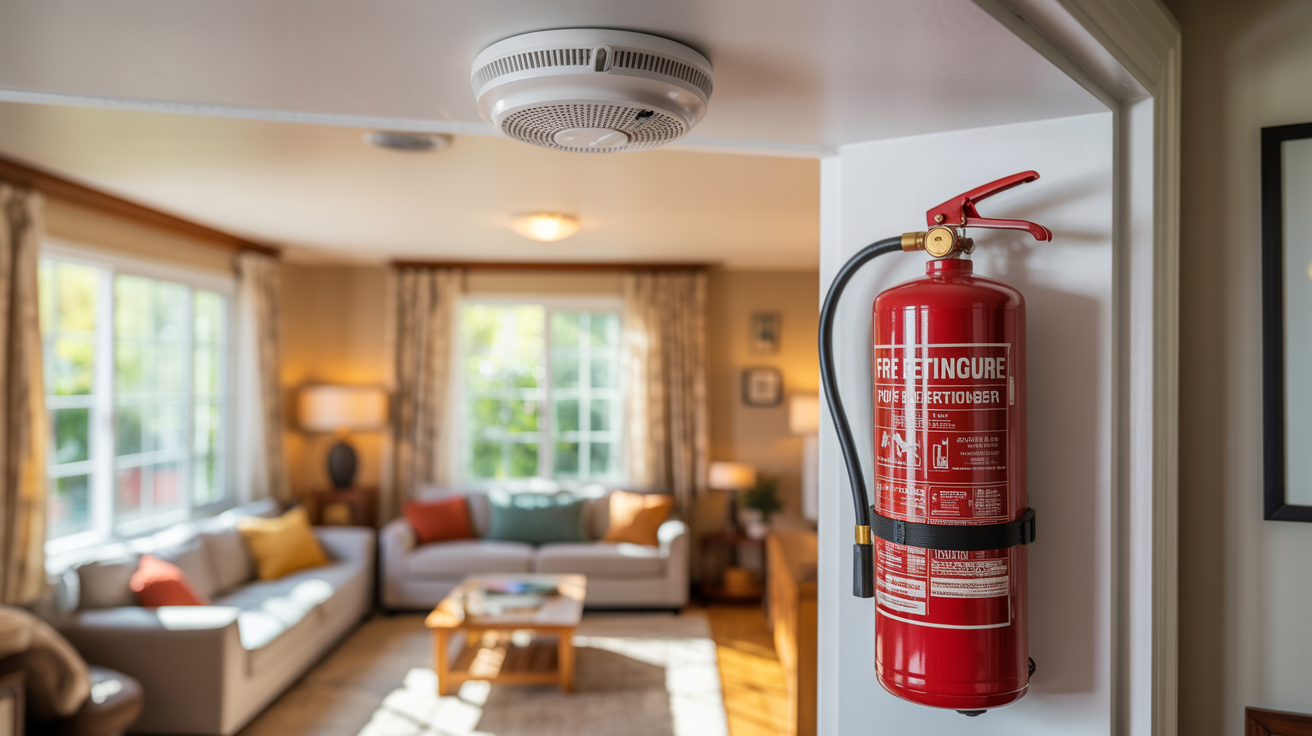Complete Home Fire Safety Guide for American Families
Comprehensive three-pillar approach to home fire safety: Prevention, Detection, and Escape planning. Protect your family with evidence-based strategies.

Critical Fire Safety Statistics
Every year, American families face the devastating consequences of home fires. The good news? Most home fires are preventable, and a comprehensive safety strategy can dramatically reduce your risk. This guide covers the three essential pillars of home fire safety.
Pillar 1: Fire Prevention
Kitchen Safety
- Never leave cooking unattended – 48% of home fires start in the kitchen
- Keep a fire extinguisher within 10 feet of your cooking area
- Maintain a 3-foot "kid-free zone" around the stove
- Clean grease buildup regularly from stovetop and exhaust hood
Electrical Safety
- Replace frayed or damaged cords immediately
- Avoid overloading outlets – use one high-wattage appliance per outlet
- Use surge protectors rated for your appliances
- Schedule electrical inspections every 5-10 years in older homes
Heating Equipment Safety
- Maintain 3-foot clearance around space heaters
- Service furnaces and chimneys annually
- Never use your oven for heating your home
- Turn off space heaters before sleeping or leaving home
Lithium Battery Safety
- Use only manufacturer-approved chargers for devices
- Charge devices on hard, non-flammable surfaces
- Stop using swollen or damaged batteries immediately
- Store e-bikes and scooters away from exits
Pillar 2: Early Detection
Working smoke alarms cut the risk of dying in a home fire by 55%. Here's how to implement an effective detection system:
Smoke Alarm Placement
- Inside every bedroom
- Outside each sleeping area
- On every level of your home, including the basement
- Interconnected alarms – when one sounds, they all sound
Maintenance Schedule
- Monthly: Test all alarms
- Every 6 months: Replace batteries (or use 10-year sealed units)
- Annually: Vacuum dust from sensors
- Every 10 years: Replace all smoke alarms
Pillar 3: Escape Planning
You have less than 3 minutes to escape a modern home fire. A practiced escape plan is critical:
Create Your Fire Escape Plan
- Draw a floor plan of your home showing all doors and windows
- Mark two escape routes from every room
- Designate a meeting place outside at a safe distance
- Practice your escape twice a year, including at night
- Practice low crawling under smoke
- Practice door checking – touch the door, doorknob, and crack with the back of your hand
Special Considerations
- Upper floors: Consider escape ladders for bedrooms above the first floor
- Young children: May hide during fires – practice "get out, stay out"
- Mobility challenges: Assign helpers and plan alternative routes
- Pets: Know their typical hiding spots but don't re-enter for them
Essential Fire Safety Equipment
Fire Extinguishers
- Kitchen: Modern all-in-one extinguisher or Class K for oil fires
- Garage: ABC-rated extinguisher for multiple fire types
- Charging areas: Lithium-rated extinguisher near e-bikes, EVs
Pro Tip: Modern fire safety products like LifeSafe StaySafe can handle 10 fire types including lithium batteries, require no training, and create no cleanup mess.
Take Action Today
Don't wait for a fire to test your family's preparedness. Implement these three pillars of fire safety today:
- Review and eliminate fire hazards in your home
- Test all smoke alarms and replace batteries
- Create and practice your fire escape plan with your family
Remember: Your family's safety is worth the time investment. These steps could save lives.